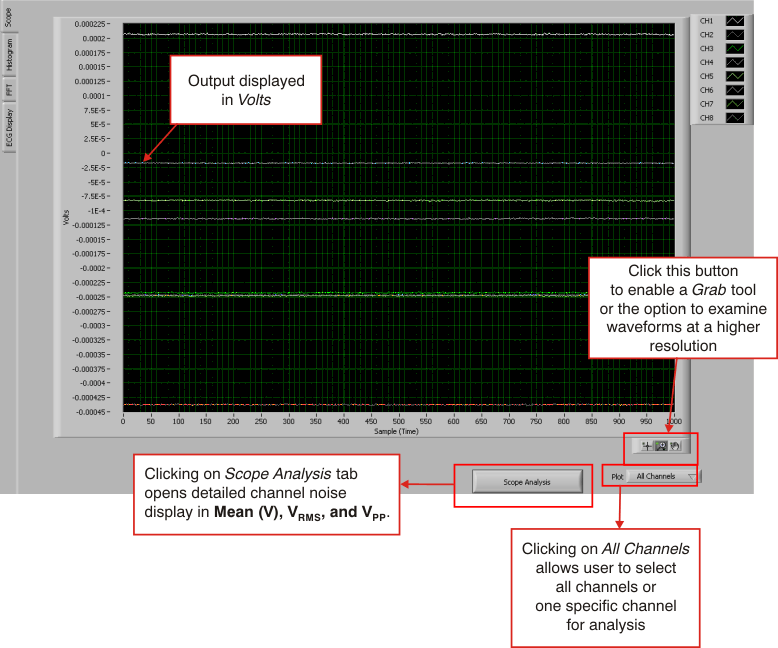SBAU171D May 2010 – January 2016 ADS1198 , ADS1298
-
ADS1298ECG-FE/ADS1198ECG-FE
- Trademarks
- 1 ADS1298ECG-FE/ADS1198ECG-FE Overview
- 2 Quick Start
- 3
Using the ADS1298ECG-FE Software
- 3.1 Application User Menu
- 3.2 Top-Level Application Controls
- 3.3 About Tab
- 3.4 ADC Register Tab
- 3.5 Analysis Tab
- 3.6 Save Tab
- 4 ADS1x98ECG-FE Input Signals
- 5 ADS1298ECG-FE/ADS1198ECG-FE Hardware Details
- ASchematics, BOM, Layout, and ECG Cable Details
- BExternal Optional Hardware
- CSoftware Installation
3.5.1 Scope Tab (Anaysis)
The Scope tool is useful for examining the exact amplitude of the measured input signals from each channel. Additionally, users can determine the noise contribution from each channel at a given resolution, and review the sampling rate, the PGA gain, and the input signal amplitude. Figure 17 illustrates the Scope tool features.
 Figure 17. Scope Tool Features
Figure 17. Scope Tool Features In the Scope Analysis window, as Figure 18 illustrates, the different noise levels are displayed when the MUX is selected as Input Short, PGA gain is set to 6 (default), and the sample rate is set to 500 samples per second (SPS).
 Figure 18. Scope Analysis Tab (Noise Levels for Each Channel Shown)
Figure 18. Scope Analysis Tab (Noise Levels for Each Channel Shown)